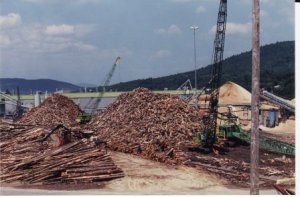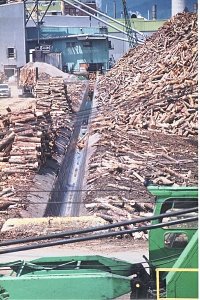Chainhauls and ponds are prototypical for timber/lumber operations. All the sources I've encountered to date suggest that for pulp & paper mills, only trucks or pulpwood cars are used to haul the wood out.That's fine BUT they all appear to simply dump the pulpwood logs into piles on the ground.Yet I have two sources that show video with single and dual log hauls BUT do not state explicitly that they are pulpwood operations. MY QUESTION. In handling pulpwood logs, when they arrive at the mill are they only dumped on the ground in piles OR are they also dumped into holding ponds and then chainhauled into the mill?
Cheers from the Heart of the Continent
Will
Cheers from the Heart of the Continent
Will



